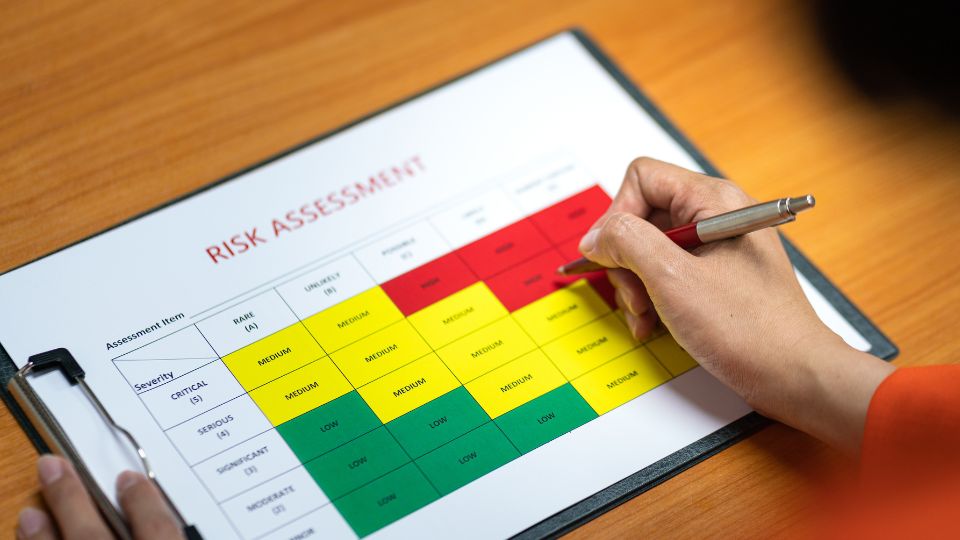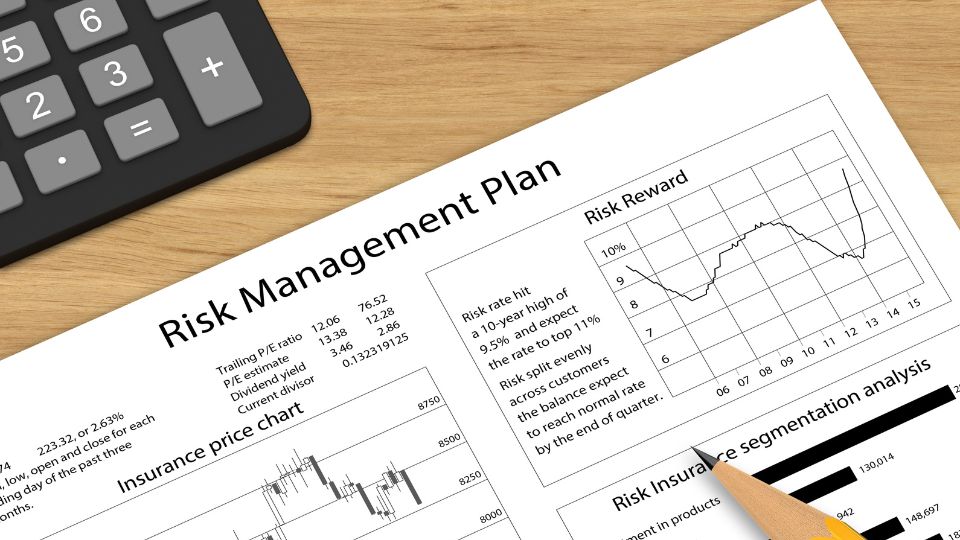From fluctuating fuel prices to changing regulations, freight forwarders face several roadblocks in their day-to-day operations.
For small and mid-size businesses, these unpredictable challenges are just the tip of the iceberg.
UNCTAD’s report on high freight rates states that in 2024, freight costs were 115% higher than pre-pandemic levels.
These numbers highlight the severity of freight rate hikes across multiple shipping routes.
Operating a freight forwarding business comes with many such inherent risks.
So, how can you tackle these unforeseen challenges?
Well, the answer is planning and preparing.
You can stay ahead of such challenges by developing well-planned risk mitigation strategies.
Let’s first understand what risk mitigation is.
What is Risk Mitigation in Freight Forwarding?

Risk mitigation in freight forwarding is about devising plans to deal with challenges that disrupt the supply chain.
These strategies often include using technology and data analysis to mitigate risks.
As easy as it may sound, risk mitigation strategies require meticulous planning and a well-thought-out process.
To develop an effective risk mitigation strategy, the first thing you need to do is assess the impact. This is crucial as it is the first step to develop a mitigation plan.
This also helps in evaluating the consequences and the chances of their occurrence.
Then you can devise a plan to mitigate risks and eliminate potential losses. In fact, there are third-party service providers who can help you with managing risk.
Let’s take a look at a few risk management services offered by third-party providers.
Types of Risk Management Services

From insurance problems to customs support, you can find a variety of professional services to help you develop robust contingency plans for your freight forwarding operations.
Here are the types of services available:
| Risk Management Service | Helps in | Providers |
| Risk Assessment and Identification | Identifying and evaluating potential risks to understand their impact on operations. | Risk consultants, auditors, industry experts |
| Compliance Risk Management | Ensuring adherence to laws, regulations, and industry standards to minimize legal and financial risks. | Legal firms, compliance consultants, internal compliance teams |
| Financial Risk Management | Managing financial risks such as credit, liquidity, market, and investment risks. | Financial advisors, investment consultants, hedge funds |
| Cybersecurity Risk Management | Protecting digital assets from cyber threats, data breaches, and system failures. | Cybersecurity firms, IT consultants, managed service providers (MSPs) |
| Supply Chain Risk Management | Managing risks associated with disruptions in the supply chain, including sourcing, transport, and inventory. | Supply chain consultants, logistics firms, procurement specialists |
| Environmental and Sustainability Risk Management | Managing environmental risks, such as climate change, pollution, and regulatory compliance. | Environmental consultants, sustainability advisors |
| Insurance and Risk Transfer | Transferring risks to third-party insurers or partners, often through policies and contracts. | Insurance brokers, reinsurance companies, insurance firms |
Now that you are aware of the risk management services available, let us dive deeper into the various risks involved in freight forwarding and corresponding solutions.
Freight Forwarding Risks and Their Solutions

Here are common freight forwarding risks and how to avoid them:
Risk #1: Documentation Errors
Documentation errors are one of the most common mistakes freight forwarders make. However, it is also an oversight that can be easily prevented. Missing, incorrect, or incomplete paperwork can lead to unnecessary delays and legal issues.
Mitigation Strategies
To prevent documentation errors, you must double-check the paperwork before submission. This includes bills of lading, invoices, certificates of origin, and customs declarations.
Additionally, you can use automated systems to generate and track essential documents. This can minimize human errors and costly delays.
You should also stay updated on international trade regulations to ensure compliance.
Risk #2: Delays Due to Customs Clearance
Customs clearance delays are one of the biggest challenges freight forwarders face. Customs regulations vary from country to country. A small error can lead to costly delays.
Mitigation Strategies
To avoid customs delays, you can either partner with a customs broker or build an in-house team specializing in navigating customs clearance.
You can carry out pre-clearance checks before the shipment reaches customs to avoid last-minute hassles.
|
Are frequent shipment delays impacting your freight forwarding business? SeaRates ERP can help provide real-time shipping tracking so you can keep your customers always informed. |
Risk #3: Cargo Damage or Loss
Cargo damage or loss is one of the significant risks in freight forwarding. It can be due to improper packaging, mishandling during transit, or extreme weather conditions.
Any compromise to the safety of a cargo can lead to financial losses and potential legal claims.
This can severely affect your reputation and result in additional operational costs.
Mitigation Strategies
To prevent this risk, ensure proper packaging of all goods. Use high-quality packaging materials like durable boxes, protective wraps, and moisture-resistant seals. They help prevent damage to goods caused by changes in impact, moisture, or temperature.
Another great way to tackle this issue is by insuring expensive goods. Cargo insurance can cover the cost of damage, loss, or theft during transit.
To avoid such situations, real-time tracking systems can be an important tool. You can keep track of shipments and detect any issues in advance.
Risk #4: Financial Instability of Carriers
The financial stability of carriers is crucial for maintaining supply chain efficiency. If a carrier goes bankrupt or faces financial losses, it can severely impact your logistics process.
Mitigation Strategy
You need to assess and monitor the financial conditions of carriers on a periodic basis.
Never rely on one carrier only. Work with diverse, reputable, and financially stable logistic partners to avoid last-minute surprises.
Create a diverse list of carriers based on their credit ratings, payment history, and timely deliveries.
Establish good relations with reliable partners, who can jump in and ensure smooth operations during crises.
Risk #5: Political and Economic Instability
Geopolitical events have a direct impact on logistics operations. Regional conflicts, trade wars, or sudden policy changes can increase shipping costs and disrupt supply chains.
For example, the Ukraine war and tensions in the Red Sea have heavily disrupted global shipping.
According to UNCTAD’s report on Maritime Trade Disrupted, the shipping costs for dry bulk goods including grains, increased by 60% due to the Ukraine conflict. This also led to a 3.7% increase in consumer food prices globally.
Mitigation Strategies
To avoid such delays, you can create and maintain a list of alternate routes and suppliers.
Never rely completely on one route or supplier. Keep your alternate plan ready to address such delays.
Regularly track global political and trade developments to understand emerging issues before they turn into costly delays. It can also help you adapt their logistical strategies accordingly.
You can also monitor the latest news on trade laws, tariffs, and sanctions to stay one step ahead of changing market trends.
Risk #6: Cybersecurity Threats
Cybersecurity threats are such problems that no freight forwarding business can overlook. Cyber-attacks can compromise sensitive data, disrupt operations, and damage your reputation.
Mitigation Strategies
To mitigate the risk of cyber threats, you need to take robust IT security measures. Use firewalls, data encryption, and multi-factor authentication for sensitive information.
Train your staff regularly on cybersecurity best practices. Emphasize the importance of using strong passwords and staying alert to potential threats.
Risk #7: Environmental Risks and Sustainability Concerns
Like any other business, environmental risks are a major factor influencing freight forwarding businesses.
Natural disasters and extreme weather can disrupt operations and lead to losses.
With rising concerns over climate change, the need for eco-friendly practices has also increased.
Mitigation Strategies
Using fuel-efficient vehicles and optimizing shipping routes to reduce emissions can help you overcome sustainability concerns.
Maintain partnerships with reliable carriers prioritizing environmental sustainability.
Educate your staff about sustainability practices and green logistics initiatives. Make sure the logistics operations comply with local and international standards like ISO 14001 or the Greenhouse Gas (GHG) Protocol.
Moreover, to ensure smooth operations you must keep a contingency plan ready, in case of natural disasters.
Conclusion
Like any other industry, risks are inevitable in freight forwarding. However, a comprehensive risk management plan can help you prevent bottlenecks while maintaining a smooth flow of operations.
With effective mitigation strategies, you can turn these very challenges into opportunities for growth.
|
Ready to grow your freight forwarding business? Partner with SeaRates ERP for seamless and secure freight forwarding solutions. Schedule your demo today. |
Frequently Asked Questions
1. What are three basic techniques for the management of risks?
The three basic techniques for risk management include:
- Risk Avoidance: This involves taking proactive measures to eliminate potential risks altogether.
- Risk Mitigation: This focuses on reducing the impact or likelihood of risks through preventive actions.
- Risk Transfer: This technique shifts the financial burden of a risk to another party, typically through contracts or insurance.
2. How do freight forwarders contribute to risk management in logistics?
Freight forwarders play a crucial role in handling potential issues. They help mitigate risks by choosing reliable carriers, coordinating shipments, and offering cargo insurance.
3. How do you mitigate shipping risk?
To mitigate shipping risks:
- Proper Packaging: Protect goods with durable materials.
- Accurate Documentation: Avoid delays with complete paperwork.
- Cargo Insurance: Cover losses from damage or theft.
- Partner with Reliable Carriers: Ensure timely and stable logistics.
- Real-Time Tracking: Monitor shipments to resolve issues quickly.


